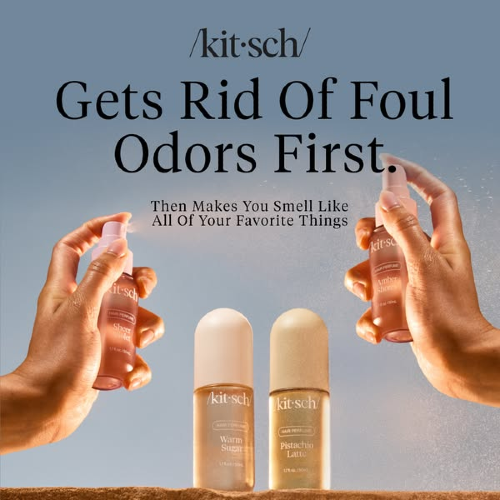Evergreen Isn’t Eternal
🧠Some of your best-performing blog posts are now quietly killing your conversions, Google Ads Adds Instant Tips + Quietly Rolls Out Smart Bidding Exploration, and more!


Howdy readers 🥰

Shoutout to past me for accepting that invite and ruining present me’s excuse.
In this newsletter, you’ll find:
🧠 Evergreen Isn’t Eternal: The SEO Content Rot Audit
🔍 Google Ads Adds Instant Tips + Quietly Rolls Out Smart Bidding Exploration
🎥 Ad of the Day
If you’re new to ScaleUP, then a hearty welcome! You and 50k+ CEOs, CMOS, and marketers have reached the right place. Let’s get into it, shall we? Oh! Before you forget, if someone forwarded this newsletter to you, don't forget to subscribe to our newsletter so you never miss out!

Together with Eko
Your product gallery holds the answers.
Most brands just aren't looking there.
Marketers spend hours optimizing ads and landing pages, but the real decision-making happens on your PDP. That's where shoppers compare and decide what to buy.
This guide from Eko breaks down what most brands overlook:
How product gallery engagement data can reveal what's working, what's missing, and what's slowing customers down.
See how brands like Mockingbird and Andie Swim improved conversion with simple changes. You’ll learn how to identify high-intent signals inside your gallery.
Get this playbook to build product pages that convert with more clarity and confidence.
Download the free guide from Eko and start using the data already on your site!

🧠 Evergreen Isn’t Eternal: The SEO Content Rot Audit
Some of your best-performing blog posts are now quietly killing your conversions.
They still rank. They still bring traffic. But the buyers? They’re bouncing, or worse, converting on competitor sites that updated their narrative while you left yours untouched.
1. Ranking ≠ Relevance: The Hidden Decay of “Top Posts”
DTC brands love their “evergreen” content archives, but algorithms love fresh, user-aligned intent. A page from 2021 might still get 2,000 clicks a month, but if its CTAs, offers, or tone are stale, it’s doing more damage than good.
The true rot? Silent performance leaks you never measure: scroll depth dropping, bounce rate rising, time-on-page flattening.
Smart marketers don’t just audit SEO, they audit content impact.
2. The Content-Decay Detection Stack: How to Find What’s Leaking
There’s a specific 4-metric sequence to run when sniffing out content rot:
- Traffic trend (stable or dropping?)
- Conversion attribution (is this content touching revenue?)
- Query alignment (does the search term still match your funnel?)
- Engagement delta (scroll, bounce, and return rate shifts)
Most CMS dashboards won’t show this decay clearly. This is where the SEMrush SEO Toolkit delivers a tactical unlock:
Use the On Page SEO Checker to flag outdated pages based on crawl issues, keyword gaps, and declining engagement. You’ll get intent-adjusted suggestions tailored to today’s SERP expectations, ready to deploy.
3. Strategic Payoff: From Passive Decay to Compounding Refresh ROI
Refreshing a high-traffic, low-conversion post is one of the highest-leverage SEO plays. You already have distribution, but now you’re matching current buyer psychology and re-aligning funnel stages.
In one case, updating 6 decaying blog posts around summer skincare lifted conversion-assisted revenue by 22% and doubled time-on-page. Why? Because the content was re-built around today’s buyer pain, not last year’s keyword.
4. The Anti-Rot Cadence: Build a Quarterly Refresh Operating System
Set a quarterly ritual. Group top-traffic URLs by assisted conversion value, run them through SEMrush’s SEO Checker, and flag any drops in scroll depth or query alignment.
Instead of rewriting your entire archive, you surgically optimize only what’s decaying. This is how content moves from static “assets” to living revenue machines.
Great SEO doesn’t just get traffic. It builds momentum-rich pages that evolve with your market. When you treat content like CRO infrastructure, not a blog backlog, you unlock an unfair compound advantage.
Run a rot audit today and revive your best-performing ghosts. You can try SEMrush’s On Page SEO Checker free for 14 days; just one refresh could pay for your quarter.

🔍 Google Ads Adds Instant Tips + Quietly Rolls Out Smart Bidding Exploration
Google Ads is layering in subtle but impactful updates that aim to streamline optimization and expand bidding potential. From hover-based insights on Optimization Score to Smart Bidding Exploration’s rollout, these changes promise more control, but also require a sharper eye from advertisers.
The Breakdown:
1. Inline Tips Now Appear Beside Optimization Scores - A new hover icon next to the Optimization Score quietly surfaces one-click insights like “add sitelinks” or “fix disapproved ads,” removing the need to enter the Recommendations tab.
2. Less Clicks, More Nudges, But Use Caution - The feature speeds up access to campaign feedback, which helps teams act faster. However, not all recommendations are equally valuable, some may be unnecessary or too broad.
3. Smart Bidding Exploration Begins Rolling Out to tROAS Campaigns - Google is testing a new bidding behavior that expands reach by allowing flexibility in ROAS targets. It's already showing up to 20% more conversions at the same cost in early cases, according to a Googler’s LinkedIn post.
Neither update has been publicly announced by Google, leaving advertisers to spot these changes on their own. This silent rollout approach means many may be using new features without even realizing it. It also raises concerns about testing visibility and user control.

🎥 Ad of the Day

What Works:
1. Double-Tiered Hook That Flips Fragrance Norms - The headline structure is a bait-and-switch reversal: “Gets Rid Of Foul Odors First.” This interrupts expectations in a category where most brands lead with scent or emotion. Instead, it leads with functional deodorizing, then softly pivots: “Then Makes You Smell Like All Of Your Favorite Things.”
2. “Favorite Things” as Emotional Anchors - Instead of abstract fragrance notes like “bergamot” or “white musk,” they name tangible, nostalgic scents, Warm Sugar, Pistachio Latte, Amber. These are emotional anchors, evoking food, coziness, or indulgence, making the product feel edible, desirable, and familiar.
Broader Insights:
Kitsch reframes a crowded fragrance space by tackling odor first (problem-aware), then linking scent to joy (emotion-aware). Its copy is structurally sound—problem → transformation—and visually reinforced with tangible, warm, human imagery.

Advertise with Us
Wanna put out your message in front of over 50,000 best marketers and decision makers?

We are concerned about everything DTC and its winning strategies. If you liked what you read, why not join the 50k+ marketers from 13k+ DTC brands who have already subscribed? Just follow this.
At ScaleUP, we care about our readers and want to provide the best possible experience. That's why we always look for ways to improve our content and connect with our audience. If you'd like to stay in touch, be sure to follow us EVERYWHERE🥰
Thanks for your support :) We'll be back again with more such content 🥳

